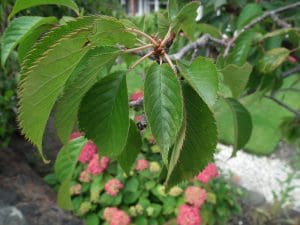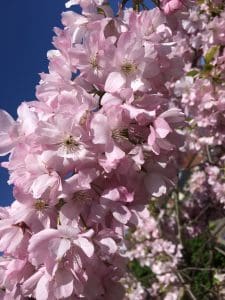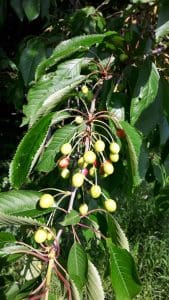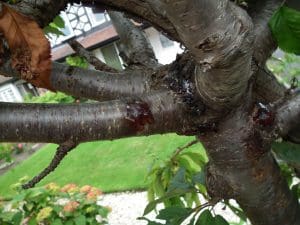Cherry / Spring / Autumn / Edible
Cherry trees are found in almost every town, village and city within the UK & they have edible parts in Spring and Autumn. Many are cultivated hybrids, but all are edible.
Common Names
Wild Cherry
Botanical Name
Prunus Cerasus
Scientific Classification
Kingdom – Plantae
Order –Rosales
Family – Rosaceae
Physical Characteristics
Wild Cherry is a deciduous tree growing up to 6ms tall, with a rough light to mid brown bark that can appear to give a dull grey glow.
Leaves
The leaves are elliptic with acute or pointed tips; the edges are slightly serrated containing long petioles (the stem between leaf and branch).
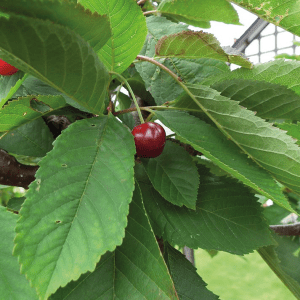
Flowers
The Flowers display the most amazing bloom throughout March to May, seeming to cover the whole tree whilst the leaves are still in infancy. Individual flowers, 3-4cms wide, produce 5 distinct white/pink petals. Cultivated varieties of Cherry may have many extra petals, but the wild type has only 5.
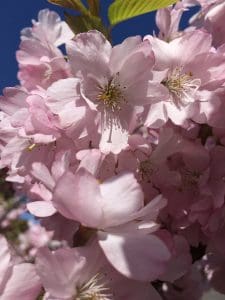
Fruits
Multiple rounded fruits stem from the same point on each branch and look like stereotypical cherries, hanging down 2-3cms on their individual stalks. Each one contains one single seed or ‘stone’
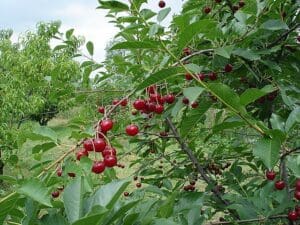
Habitat
Mainland and Northern Europe, England, Western Asia and Northern America.
Garden edges, hedges, open fields and planted woodland.
Known Hazards
Although no specific mention has been seen for this species, it belongs to a genus where most, if not all members of the genus produce hydrogen cyanide, a poison that gives almonds their characteristic flavour. This toxin is found mainly in the leaves and seed and is readily detected by its bitter taste. It is usually present in too small a quantity to do any harm but any very bitter seed or fruit should not be eaten. In small quantities, hydrogen cyanide has been shown to stimulate respiration and improve digestion, it is also claimed to be of benefit in the treatment of cancer. In excess, however, it can cause respiratory failure and even death.
Could be confused with
Other Cherry trees, as they are able to hybridise very easily, used similarly.
Edible Use
Flowers/Blossom: Teas, syrups, cakes, decoration, imparts almond flavour
Fruit/seeds: fruit compote, syrup, alcohol infusions, pies, cakes, cookies, muffins.
Notes on Herbal uses
Sour cherries have fairly high amounts of melatonin, a chemical vital in regulating human sleep cycles, it has therefore been used in the past to aid sleep patterns of individuals.
Extra notes from the Foragers
This tree bears fruit with a single large pip, meaning you can tap the tree, or remove some of the bark until sap starts to leak from the trunk. This sap can be used as a replacement to gum Arabic in making water colour paints. It must be noted that the sap of the Cherry tree will shrink a lot more than gum Arabic and this must be taken in to account when adding constituent ingredients to your paint mix (less pigment and honey).



